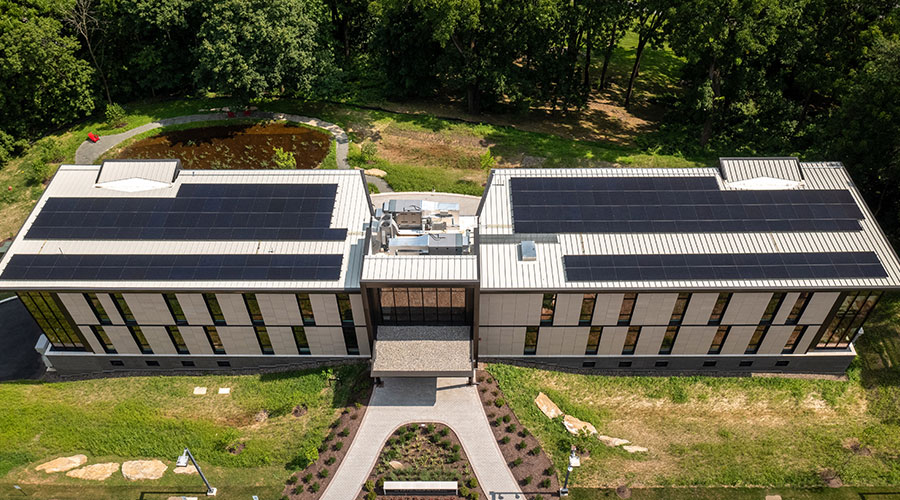Some in Commercial Real Estate Are Addressing Carbon Footprint
Risk Mitigation
As debate continues, many in commercial real estate are not waiting to
address their organization's carbon footprint. Many large and
international companies are already reporting greenhouse gas
emissions."We are seeing it as being increasingly important, especially
for building owners trying to attract higher-profile tenants to the
building," says Amann.
Factoring in potential legislation and the effects of a changing climate
is part of many organizations' risk analysis."Our clients are taking
potential legislation seriously because to not do so bears incredible
risk," says Bailey."This is not only the risk of costs due to being
unprepared, but also the projected up-tick in electricity prices. That's
a cost that many of our clients might not have projected in their
budgets going forward. But then there's also the cost of missed
opportunities, and it just helps to be prepared for where the nation is
going."
Indeed there is so much global concern about climate change and
confusion about how to approach the greenhouse gas emissions reporting
demanded by shareholders that the Securities and Exchange Commission
(SEC) was spurred to make a statement on disclosure requirements related
to climate change. In February of this year, it clarified that under
existing regulation, publicly traded companies are required to disclose
their exposure to risk from"known trends, events, demands, commitments
and uncertainties that are reasonably likely to have a material effect
on financial condition or operating performance." The areas where the
SEC determined disclosure may be required are: legislation and
regulation, including pending legislation; international accords;
regulation or business trends; and physical impacts of climate change.
Emissions reporting is also being addressed by BOMA, which is working on
a revision of its green lease guide, due out by the fall. BOMA is
looking into the issue of documenting and reporting emissions and how
that reporting affects leasing and tenants, says Penafiel."Emissions
(reductions) are coming and documentation is part of the step towards
emissions reductions."
In the end, the most compelling argument for addressing climate change
through comprehensive energy policy doesn't have to be just about
being"eco" at all."Forget about climate change," says Majersik."Let's
imagine that climate change isn't a reality. Then we will have spent all
this money on creating jobs, saving energy, and saving building owners
and managers money."
Building Star
In the face of the quagmire that is comprehensive climate change legislation, a lot of hope is being placed on other narrowly focused legislation and initiatives. One of these is the Building Star program, the commercial corollary to the Home Star bill, a.k.a."Cash for Caulkers." In the House, Home Star passed 246-161 in early May but still needs Senate approval.
Building Star was introduced in early March by Rep. Jeff Merkley (D-Ore.) and Senator Mark Pryor (D-Ark.) and its two-year $6 billion authorization is aimed at job creation through rebates and tax incentives for energy-efficiency retrofits in commercial and multi-family residential buildings.
"Building Star is a good idea," says Cliff Majersik, executive director of the Institute for Market Transformation." Clearly large buildings are a significant source of energy consumption and greenhouse gas emissions. And we need to address them with all cost-effective tools."
Building Star also has the support of many industry groups such as the Real Estate Roundtable and BOMA International, which hopes it will be included in an upcoming jobs bill.
— Naomi Millán
|

Related Topics:














